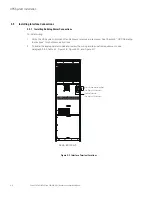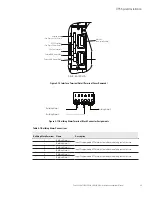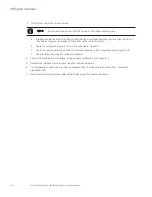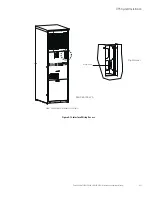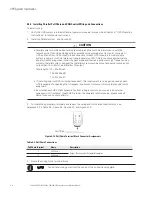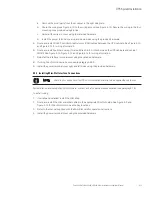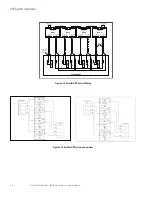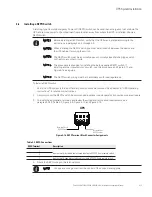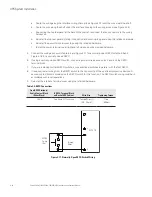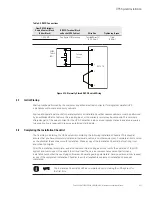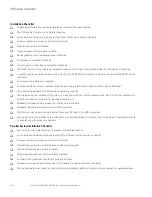
Understanding UPS Operation
5-2
Eaton 9EHD UPS (80-200 kVA, 380/400/415V) Installation and Operation Manual
A single UPS operates independently to support an applied load from the inverter, providing conditioned and
uninterruptible AC power to the critical load from the output of the module. During an outage, the inverter
continues to operate, supporting power to the load from the battery supply. If the unit requires service, applied
loads are transferred to the internal bypass either automatically or manually. With the exception of an optional
external battery cabinet, no other cabinets or equipment are required for the single UPS to successfully support
its applied loads.
5.2.1 Modes
The Eaton 9EHD UPS supports a critical load in four different modes of operation:
•
In Standard Normal mode, the critical load is supplied by the inverter, which derives its power from rectified
utility AC power. In this mode, the battery charger also provides charging current for the battery, if needed,
Standard mode is the standard normal operating mode.
•
In High-Efficiency (HE) mode, commercial AC power is supplied directly to the critical load through the
internal bypass and transfers automatically to Standard Normal mode (double-conversion on demand) if an
abnormal condition is detected.
•
In Bypass mode, the critical load is directly supported by utility power.
•
In Battery mode, the battery provides DC power, which maintains inverter operation. The battery supports
the critical load.
The following paragraphs describe the differences in the UPS operating modes, using block diagrams to show
the power flow during each mode of operation.
5.2.2
Standard Normal Mode
During Standard Normal mode, power for the system is derived from a utility input source through the rectifier
input contactor. Three-phase AC input power is converted to DC using IGBT devices to produce a regulated DC
voltage to the inverter. When the battery contactor is closed the battery is charged directly from the regulated
rectifier output through a buck or boost DC converter, depending on the system voltage and the size of the
battery string attached to the unit.
Figure 5-2 shows the path of electrical power through the UPS system when the UPS is operating in Normal
mode.
The battery converter derives its input from the regulated DC output of the rectifier and provides either a
boosted or bucked regulated DC voltage charge current to the battery. The battery is always connected to the
UPS and ready to support the inverter should the utility input become unavailable.
The inverter produces a three-phase AC output to a customer's load without the use of a transformer. The
inverter derives regulated DC from the rectifier and uses IGBT devices and pulse-width modulation (PWM) to
produce a regulated and filtered AC output. The AC output of the inverter is delivered to the system output
through the output contactor.
5.2
Single UPS
If the utility AC power is interrupted or is out of specification, the UPS automatically switches to Battery mode
to support the critical load without interruption. When utility power returns, the UPS returns to Normal mode.
Summary of Contents for 9EHD Series
Page 81: ......
Page 82: ...614 0 00...

